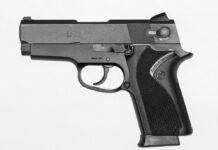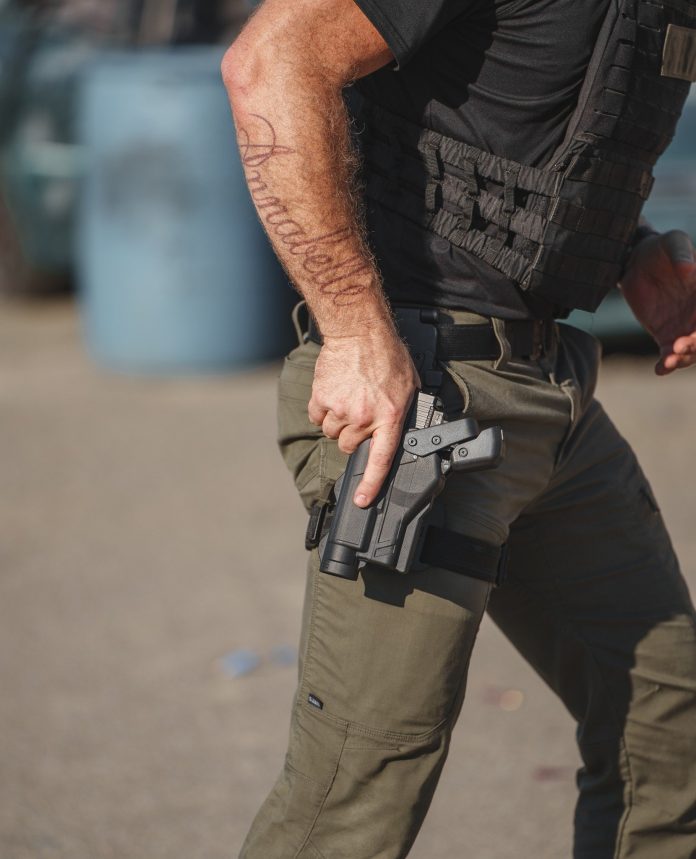
Holsters, holsters, holsters, everyone needs a holster. A good holster goes a long way, and different people have different needs for different holsters. With that in mind, one of the main considerations you’ll have to make is retention level. How likely is it that someone will snatch your gun or your gun will have difficulty staying in the holster for any reason? Concealed carriers and police officers have different demands for their holsters. Let’s dive into holsters and retention levels to hopefully create a better understanding of retention levels.
The Two Types of Retention
Retention comes in two forms, passive and active.
Active means there is a device that must be defeated to draw the holster. This device can vary. Older leather holsters utilized a thumb thong with a button snap, and that’s active. Modern holsters might use a button, a sliding lever, or any other modern device. Those are all examples of active retention.
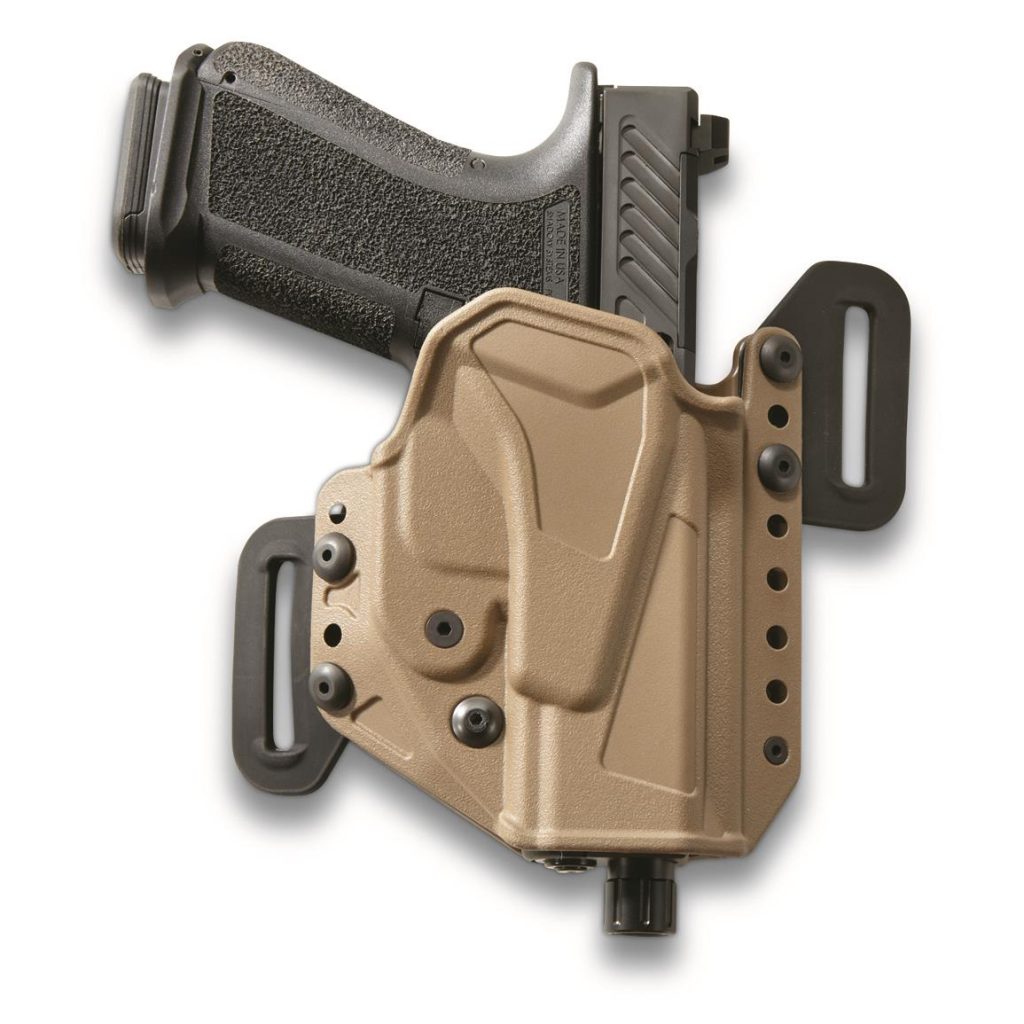
Passive is based on the friction fit of the holster. There is no device to be defeated, and the friction of the holster keeps the gun in place., This can vary quite a bit, and many forms of passive retention are adjustable to increase the friction.
These are the two categories of retention, but they do not represent the various level available.
Holster Retention Levels
There isn’t an official list of retention levels held by police and military forces. They typically rely on industry experience, and companies like Safariland publish in-depth explanations of retention levels. Safariland tends to rule the roost and set the standard for most of the industry.
Level 1
Level 1 retention holsters are defined by having one retention device. This can be the Safariland ALS, the Blackhawk thumb lever, and other one-step methods to draw your gun. This is the most basic active retention level. It’s not overly complicated and will actively prevent the weapon from falling out of your holster and will make grabs difficult.

There seems to be some debate if passive retention holsters count as Level 1 holsters. This means friction-fit holsters would be considered level 1. I’m not agreeing or disagreeing. Just clearing up how others may define a level 1 holster.
Level 2
Level 2 retention requires two actions by the user to free the gun from the holster. These systems make it fairly difficult to snatch a gun, and the two steps can vary. These can be a single hood and passive friction retention or a two-step hood system.
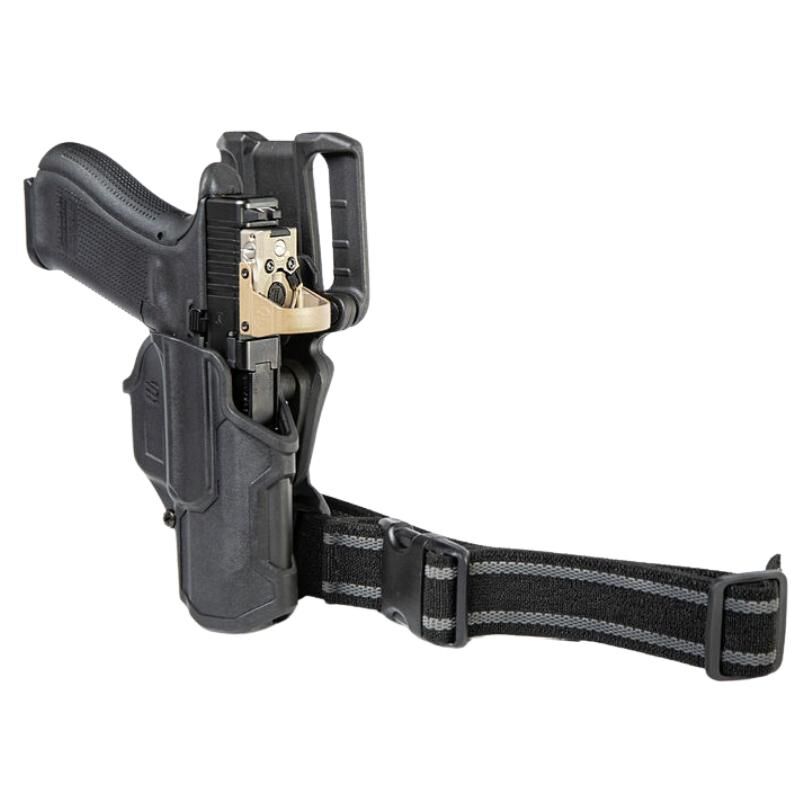
Level 3
Level 3 holster pairs together two devices to facilitate a very high level of retention. Safariland uses the SLS hood and ALS release for their level 3 systems. Blackhawk uses a hood and thumb lever, and there are numerous other options. This is the most common option for duty use.
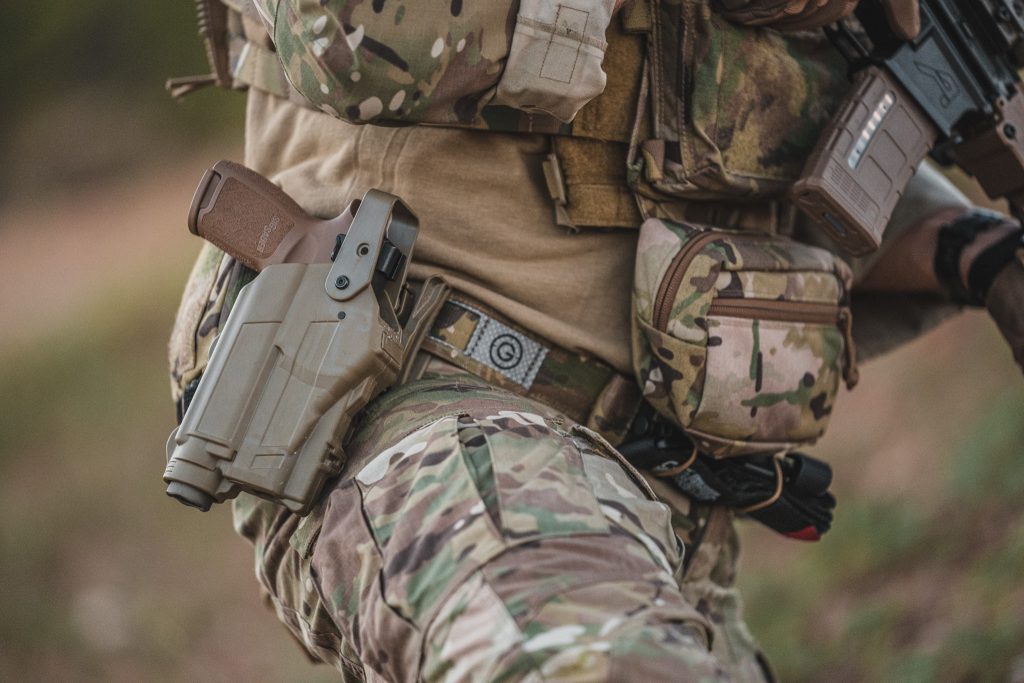
Level 4
Level 4 is a bit unusual and seems to only be offered by Safariland. These holsters include the SLS and ALS systems, and they also add the SLS Sentry Guard device to make grabs nearly impossible. According to Safariland, these are aimed more at corrections environments than duty or patrol.
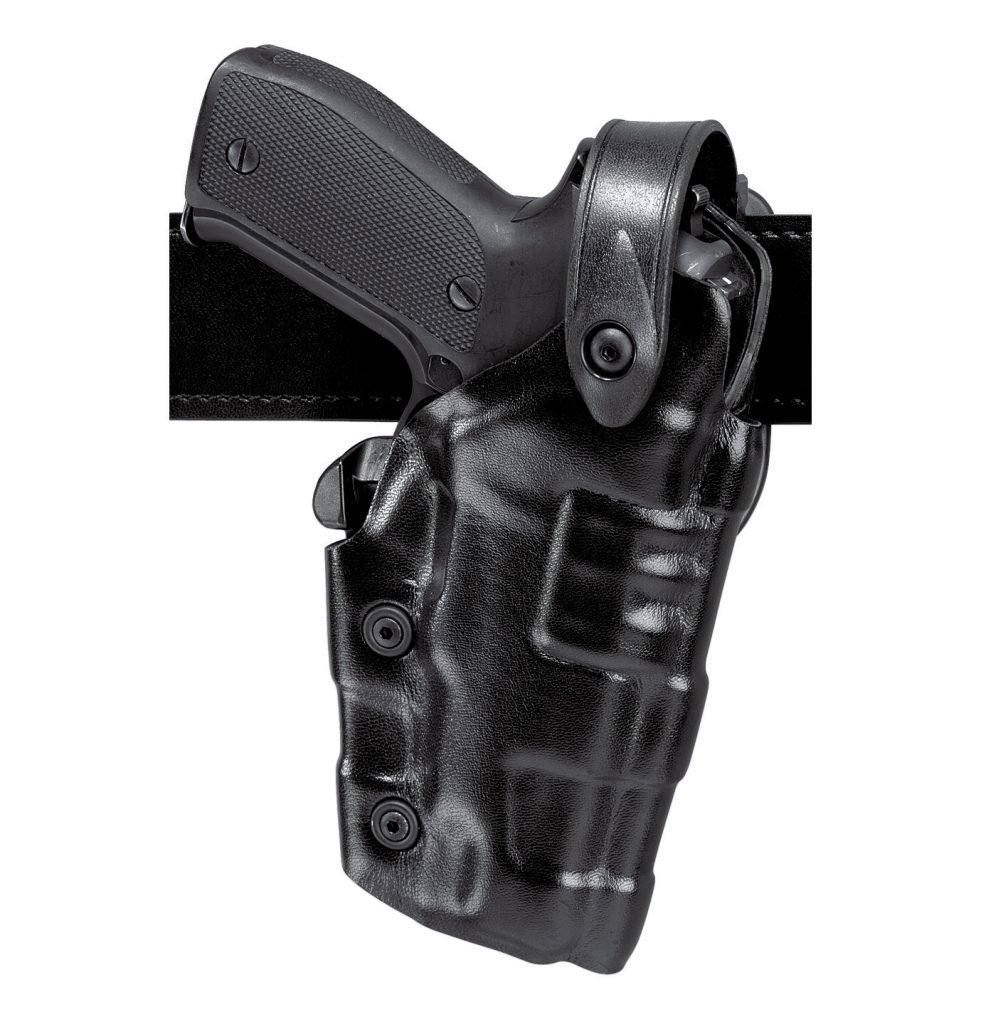
Clearing the Air
Hopefully, we’ve helped explain what these levels mean and how they affect your holster selection options. Not everyone needs a level 3 holster, but if you do need that retention, there is no other option. Now you know what those levels mean and can make the decision for yourself.


